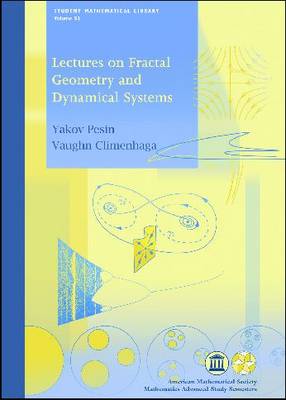Student Mathematical Library
3 total works
Groups arise naturally as symmetries of geometric objects, and so groups can be used to understand geometry and topology. Conversely, one can study abstract groups by using geometric techniques and ultimately by treating groups themselves as geometric objects. This book explores these connections between group theory and geometry, introducing some of the main ideas of transformation groups, algebraic topology, and geometric group theory.
The first half of the book introduces basic notions of group theory and studies symmetry groups in various geometries, including Euclidean, projective, and hyperbolic. The classification of Euclidean isometries leads to results on regular polyhedra and polytopes; the study of symmetry groups using matrices leads to Lie groups and Lie algebras.
The second half of the book explores ideas from algebraic topology and geometric group theory. The fundamental group appears as yet another group associated to a geometric object and turns out to be a symmetry group using covering spaces and deck transformations. In the other direction, Cayley graphs, planar models, and fundamental domains appear as geometric objects associated to groups. The final chapter discusses groups themselves as geometric objects, including a gentle introduction to Gromov's theorem on polynomial growth and Grigorchuk's example of intermediate growth.
The book is accessible to undergraduate students (and anyone else) with a background in calculus, linear algebra, and basic real analysis, including topological notions of convergence and connectedness.
This book is a result of the MASS course in algebra at Penn State University in the fall semester of 2009.
The first half of the book introduces basic notions of group theory and studies symmetry groups in various geometries, including Euclidean, projective, and hyperbolic. The classification of Euclidean isometries leads to results on regular polyhedra and polytopes; the study of symmetry groups using matrices leads to Lie groups and Lie algebras.
The second half of the book explores ideas from algebraic topology and geometric group theory. The fundamental group appears as yet another group associated to a geometric object and turns out to be a symmetry group using covering spaces and deck transformations. In the other direction, Cayley graphs, planar models, and fundamental domains appear as geometric objects associated to groups. The final chapter discusses groups themselves as geometric objects, including a gentle introduction to Gromov's theorem on polynomial growth and Grigorchuk's example of intermediate growth.
The book is accessible to undergraduate students (and anyone else) with a background in calculus, linear algebra, and basic real analysis, including topological notions of convergence and connectedness.
This book is a result of the MASS course in algebra at Penn State University in the fall semester of 2009.
Surfaces are among the most common and easily visualized mathematical objects, and their study brings into focus fundamental ideas, concepts, and methods from geometry, topology, complex analysis, Morse theory, and group theory. At the same time, many of those notions appear in a technically simpler and more graphic form than in their general 'natural' settings. The first, primarily expository, chapter introduces many of the principal actors - the round sphere, flat torus, Mobius strip, Klein bottle, elliptic plane, etc. - as well as various methods of describing surfaces, beginning with the traditional representation by equations in three-dimensional space, proceeding to parametric representation, and also introducing the less intuitive, but central for our purposes, representation as factor spaces.It concludes with a preliminary discussion of the metric geometry of surfaces, and the associated isometry groups. Subsequent chapters introduce fundamental mathematical structures - topological, combinatorial (piecewise linear), smooth, Riemannian (metric), and complex - in the specific context of surfaces. The focal point of the book is the Euler characteristic, which appears in many different guises and ties together concepts from combinatorics, algebraic topology, Morse theory, ordinary differential equations, and Riemannian geometry.The repeated appearance of the Euler characteristic provides both a unifying theme and a powerful illustration of the notion of an invariant in all those theories. The assumed background is the standard calculus sequence, some linear algebra, and rudiments of ODE and real analysis. All notions are introduced and discussed, and virtually all results proved, based on this background. This book is a result of the MASS course in geometry in the fall semester of 2007.
Lectures on Fractal Geometry and Dynamical Systems
by Yakov Pesin and Vaughn Climenhaga
Published 1 November 2009
Both fractal geometry and dynamical systems have a long history of development and have provided fertile ground for many great mathematicians and much deep and important mathematics. These two areas interact with each other and with the theory of chaos in a fundamental way: many dynamical systems (even some very simple ones) produce fractal sets, which are in turn a source of irregular 'chaotic' motions in the system. This book is an introduction to these two fields, with an emphasis on the relationship between them. The first half of the book introduces some of the key ideas in fractal geometry and dimension theory - Cantor sets, Hausdorff dimension, box dimension - using dynamical notions whenever possible, particularly one-dimensional Markov maps and symbolic dynamics. Various techniques for computing Hausdorff dimension are shown, leading to a discussion of Bernoulli and Markov measures and of the relationship between dimension, entropy, and Lyapunov exponents. In the second half of the book some examples of dynamical systems are considered and various phenomena of chaotic behaviour are discussed, including bifurcations, hyperbolicity, attractors, horseshoes, and intermittent and persistent chaos. These phenomena are naturally revealed in the course of our study of two real models from science - the FitzHugh - Nagumo model and the Lorenz system of differential equations. This book is accessible to undergraduate students and requires only standard knowledge in calculus, linear algebra, and differential equations. Elements of point set topology and measure theory are introduced as needed. This book is a result of the MASS course in analysis at Penn State University in the fall semester of 2008.


